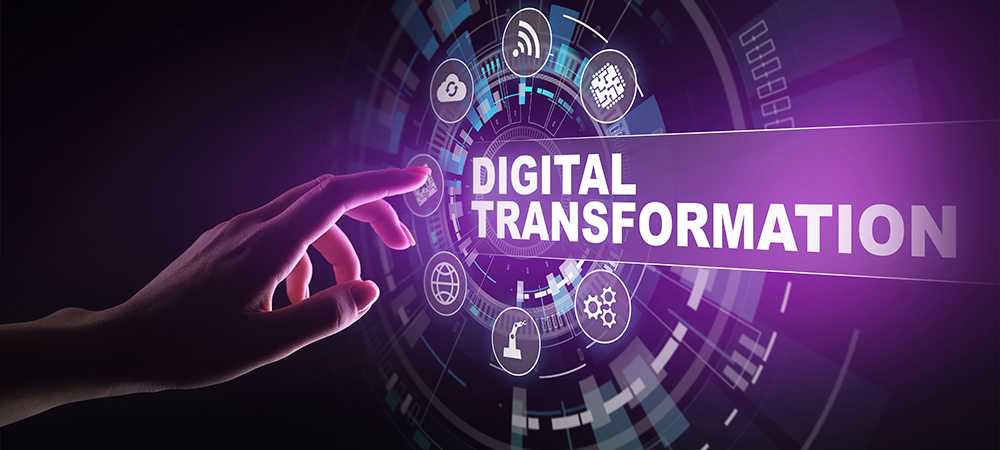MuleSoft has revealed some of the top trends expected for the year ahead as CIOs look to overcome some of the economic pressures on businesses and improve the user experience. It found that automation, composability, IT democratisation and sustainability are top priorities as businesses plan for a new year.
Amid economic uncertainty, companies are prioritising efficient and sustainable growth for the year ahead.
A report from Salesforce’s MuleSoft identified seven trends that are key to overcoming increasing operational pressures while still maintaining and improving customer and employee experiences.
“Uncertain economic conditions and a renewed focus on operational efficiency are leading business leaders to make critical, near-term investments in technologies that will increase efficiency, productivity and resilience,” said Matt McLarty, Global Field CTO, MuleSoft. “Automation, low/no-code tools and cybersecurity, among other technologies, will become the most relied upon resources for every organisation.”
Here’s what it found:
1. Investment in automation will surge as companies aim to do more with less
Automation drives efficient growth, enhances productivity and generates much-needed cost savings amid economic uncertainty. For example, Salesforce’s suite of automation technologies saves customers over 100 billion hours every month. However, to drive significant impact in 2023, organisations must adopt more strategic, enterprise-wide automation or hyperautomation initiatives.
Many are already doing so, as 80% of organisations report that hyperautomation is on their technology roadmap for the next 24 months. To achieve the potential of these initiatives, integration and composability must be essential ingredients for digital strategies in the coming year.
2. Composability will be a core pillar of business strategies that drive innovation and agility
Composability immediately enables teams to do more with less and increases efficiency by enabling teams to reuse existing capabilities to become more agile.
By combining composability strategies like low/no-code with hyperautomation technologies, organisations can alleviate IT delivery capacity restraints and innovate at speed and scale to create the seamless, connected experiences that their customers and users crave.
3. Non-technical users will use low/no-code tools and automation to accelerate transformation
As the demand for Digital Transformation continues to soar and the IT talent shortage becomes more profound, IT teams are increasingly stretched. A large proportion (73%) of IT leaders agree that acquiring IT talent has never been harder. In 2023, low/no-code tools will be rolled out across the workforce to alleviate these pressures and empower a larger cohort of business technologists to reuse capabilities in their own digital projects.
This approach will help to circumvent IT bottlenecks and speed up transformation. We’ll also see more organisations create fusion teams that combine both business and technology experts. Equipped with the right tools, these teams are free to innovate with the oversight of the IT department to mitigate any cyber or compliance risk.
4. Organisations will invest in total experience (TX) strategies to drive greater customer and employee loyalty and advocacy
In 2023, organisations will be under more pressure than ever to deliver seamless customer experiences that drive growth, safeguard revenues and ensure customer loyalty. However, they will increasingly realise that employee experience is equally critical to their success. Research shows that 86% of IT leaders now say the experience an organisation provides its employees and customers is as important as its products and services.
Organisations will combine customer (CX) and employee (EX) experience initiatives to increase revenue and retain scarce talent so they can deliver more agile and resilient business outcomes. To support this, organisations will focus on integration and automation strategies designed to connect the systems and processes that support experiences across the enterprise.
5. Firms will increasingly automate data-driven decision intelligence to reduce the huge costs of wasted opportunities
Making well-informed data-driven decisions is already a top priority for 83% of organisations. However, the data needed to generate actionable intelligence is often locked away in enterprise silos, creating a roadblock to innovation.
In 2023, we’ll see a substantial rise in embedding real-time analytics to help break down data silos and create a data fabric that provides automated, intelligent and real-time insights and reduces untimely decisions. By embedding real-time analytics into the data fabric, organisations will increasingly look to automate decision-making, helping them accelerate time-to-value and eliminate wasted opportunities.
6. Cybersecurity defences will become more layered and integrated to protect from increasing threat complexity
Investments in distributed architectures and Edge technologies will grow even further, introducing even greater security risks. In response, 2023 will see more organisations move towards the cybersecurity mesh approach advocated by Gartner. By 2024, Gartner predicts organisations adopting a security mesh architecture will reduce the financial impact of security incidents by an average of 90%.
To succeed, organisations will need to manage connections, APIs, compositions and automation bots from a single interface. This will lead to a growing adoption of lightweight platforms that are designed to work across any architecture or application type – whether they reside in a public cloud provider’s data centre, an on-premises system, or out at an Edge device.
7. Sustainability will drive ongoing IT investments
Environmental sustainability remains among the biggest challenges facing society. To drive sustainability in their own operations, organisations will increasingly look to harness data-driven insights and improved integration across supply chains.
“As companies gear up for the year ahead, businesses must recognise that effectively utilising new digital techniques is the only way to ensure growth amid economic pressures,” said McLarty. “Investing in cost-efficient, employee- and customer-centric technologies will be critical for companies seeking to remain agile and break away from the competition in 2023.”


